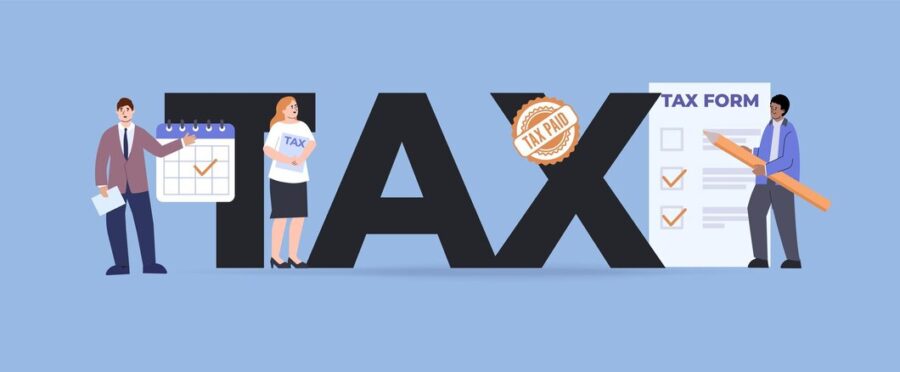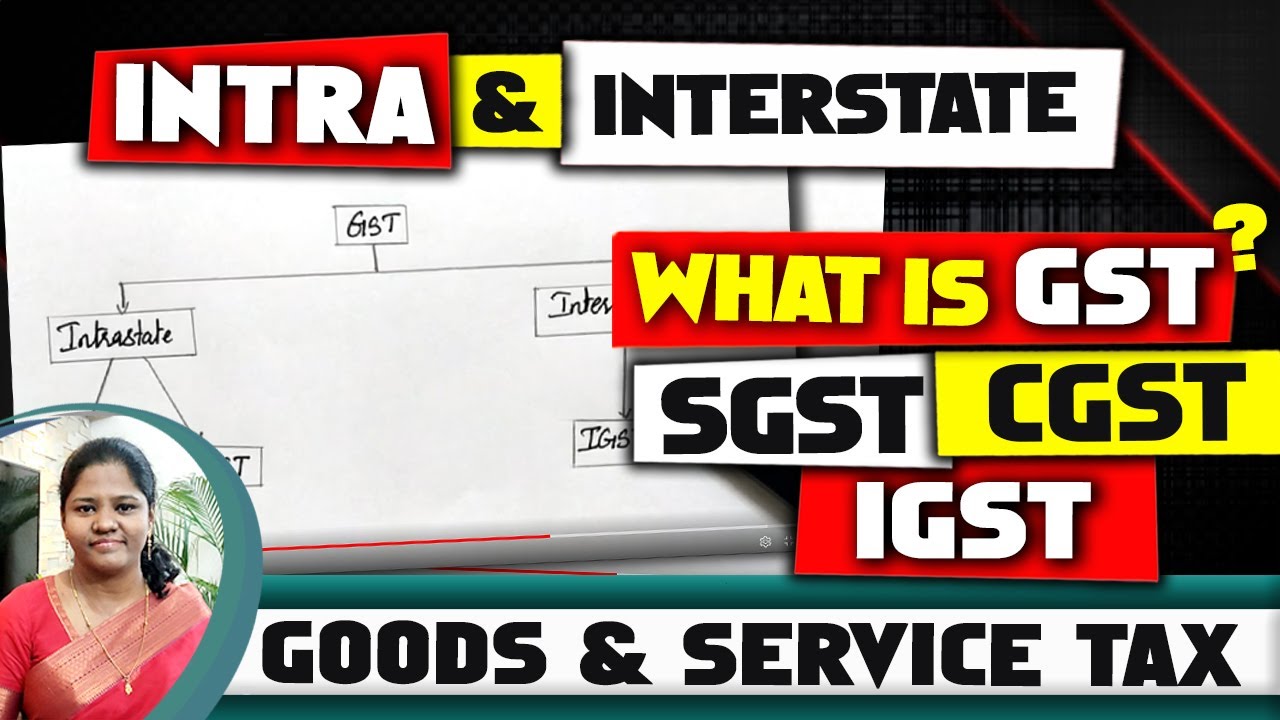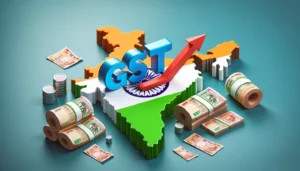SGST, CGST, and IGST in India’s GST System
- 21 Aug 24
- 14 mins

SGST, CGST, and IGST in India’s GST System
- Understanding SGST, CGST, IGST, and UTGST
- An Overview of CGST, SGST, and IGST
- The Rationale Behind the Division into SGST, CGST, and IGST
- Criteria for Applicability of CGST, SGST, and IGST
- Adjusting IGST with CGST and SGST
- Can SGST be Adjusted with IGST?
- Adjusting Input Tax Credits: Offsetting GST Liability
Key Takeaway
- The GST system in India includes SGST, CGST, IGST, and UTGST, designed to streamline the tax structure and create a unified market.
- SGST and CGST are levied on intra-state transactions, while IGST is applicable to inter-state transactions and imports/exports.
- SGST is collected by state governments, CGST by the central government, and IGST revenue is shared between both.
- Businesses can adjust IGST with CGST and SGST credits to efficiently manage their tax liabilities.
- The input tax credit mechanism ensures that businesses can offset their GST liabilities, reducing the overall tax burden and simplifying compliance.
Understanding SGST, CGST, IGST, and UTGST
The Goods and Services Tax (GST) is a substantial reform to India's tax system that aims to create a single market and streamline the formerly complex web of indirect taxes. GST was implemented on July 1, 2017, and it consolidates different central and state taxes into a single tax, establishing a unified tax system across the country. The installation of GST has resulted in a dramatic shift in the way businesses operate, making tax compliance easier and lowering the tax burden on end customers.
GST is divided into three major components: CGST (Central Goods and Services Tax), SGST (State Goods and Services Tax), and IGST. These components ensure that the central and state governments receive their appropriate share of tax revenue from transactions, whether they take place within a single state or beyond state borders. Each component serves a distinct purpose and is designed to make tax administration more efficient and transparent.
Handle all your sales and purchase invoices in one place.
Pice’s all-in-one invoice management tool helps you track, send, and organize invoices from a single dashboard. Automatically share new invoices with customers, send timely payment reminders, and keep your collections under control—effortlessly.
Want early access? Fill out this form to get request a demo!
CGST (Central Goods and Services Tax): A tax levied by the central government on intrastate supplies.
State Goods and Services Tax (SGST): A tax levied by state governments on intrastate supplies.
IGST (Integrated Goods and Services Tax): A tax levied by the central government on interstate transactions and imports.
Understanding these components is critical for businesses to successfully navigate the GST regime and maintain compliance with tax rules.
An Overview of CGST, SGST, and IGST
Explaining CGST: Full Form and Meaning
CGST stands for Central Goods and Services Tax. It is a fundamental component of India's GST system, imposed by the Central Government on the supply of goods and services within a state. CGST applies when a transaction takes place wholly within the limits of a single state. In such circumstances, both the CGST and the SGST are imposed concurrently, with the revenue split between the central and state governments.
The establishment of CGST superseded various former central taxes, including Central Excise Duty, Service Tax, and Customs Duty on goods and services. This convergence of taxes under CGST simplifies the central tax system, making it easier for businesses to comply with tax legislation and the government to administer and collect taxes.
For example, if a business in Maharashtra sells items to a consumer in Maharashtra, both SGST and CGST will be taxed on the transaction. The CGST rate is typically half of the overall GST rate applicable to the products or services, with the remaining half being SGST.
The implementation of CGST offers various advantage:
- Elimination of the Cascading Effect of Taxes: By subsuming various central taxes, CGST ensures that taxes are levied only on the value addition at each stage, preventing the tax-on-tax scenario that existed previously.
- Simplified Tax Compliance: Businesses now have a single tax to comply with at the central level, reducing the administrative burden and making compliance easier.
- Increased Transparency: The uniform application of CGST across the country promotes transparency and reduces the scope for tax evasion.
Explaining SGST: Full Form and Meaning
SGST stands for State Goods and Services Tax. It is a tax levied by state governments on the supply of goods and services within their respective states.
SGST is one of the two components of intra-state transactions under the GST regime, the other being CGST (Central Goods and Services Tax). When a transaction occurs within a single state, both SGST and CGST are applied, with the revenue being shared between the state and central governments.

For example, if a business in Karnataka sells goods to a customer within Karnataka, SGST will be levied on the transaction along with CGST. The rate of SGST is usually half of the total GST rate applicable to the goods or services, with the other half being CGST.
Explaining IGST: Full Form and Meaning
For integrated goods and services tax, see IGST. The Central Government taxes both imports and exports as well as interstate deliveries of goods and services. Whereas CGST and SGST are applicable to intra-state transactions, IGST is applied when a transaction crosses state borders. An established formula divides the IGST revenue between the federal and state governments.
The establishment of the IGST guarantees a smooth transfer of input tax credit from one state to another and tackles the difficulties related to interstate commerce. Through the prevention of the tax cascade effect, this approach encourages seamless trade across state boundaries.
For example, IGST will be charged on a transaction where a company in Maharashtra sells items to a consumer in Gujarat. The Central Government gathers the whole tax amount and then divides the money among the several states engaged in the transaction.
Benefits of IGST implementation include:
- Simplified Taxation for Inter-State Transactions: IGST consolidates the taxes applicable to inter-state transactions, making it easier for businesses to comply with tax regulations and reducing the administrative burden.
- Seamless Input Tax Credit: IGST ensures that businesses can claim input tax credit for the taxes paid on inter-state purchases, preventing the cascading effect of taxes and reducing the overall tax burden.
- Promotes National Integration: By facilitating smooth inter-state trade, IGST promotes a unified market across India, enhancing economic integration and growth.
The Rationale Behind the Division into SGST, CGST, and IGST
GST must be divided into SGST (State Goods and Services Tax), CGST (Central Goods and Services Tax), and IGST (Integrated Goods and Service Tax) in order for India's tax structure to remain balanced and effective. This divide provides a fair allocation of tax revenue between the federal and state governments, tackles the difficulties of interstate and intrastate transactions, and makes tax compliance easier for enterprises.
Ensuring Fair Revenue Distribution: Prior to GST, India had a complicated tax structure with several indirect taxes imposed by both the central and state governments, ensuring equitable revenue distribution.

This approach frequently resulted in double taxation and tax cascading, raising the tax burden on enterprises and consumers. By dividing GST into SGST, CGST, and IGST, the government ensures that both the national and state governments receive their fair share of tax revenue.
Managing Transaction Complexity: Tax collection and revenue sharing varies between intra-state and interstate sales. The separation of SGST, CGST, and IGST tackles these complexities:
- Intra-state Transactions: SGST rates and CGST rates are levied on intra-state sale of goods and services. This ensures that the tax burden is shared between the state and central governments, simplifying compliance and administration.
- Inter-state Transactions: IGST is levied on inter-state supplies of goods and services, as well as on imports and exports. IGST ensures that the tax burden is streamlined, and the revenue is appropriately shared between the states involved and the central government.
Simplifying Tax Compliance: For businesses, the split into SGST, CGST, and IGST simplifies the tax compliance process:
- Businesses dealing in intra-state transactions only need to manage SGST and CGST.
- Businesses involved in inter-state transactions need to manage IGST, with provisions to adjust input tax credits seamlessly.
💡If you want to pay your GST with Credit Card, then download Pice Business Payment App. Pice is the one stop app for all paying all your business expenses.
Criteria for Applicability of CGST, SGST, and IGST
The applicability of CGST, SGST, and IGST depends on the nature of the transaction, specifically whether it is an intra-state or inter-state transaction. Understanding the criteria for each type of tax is crucial for businesses to ensure accurate tax compliance.
Intra-state Transactions

Intra-state transactions occur when the supply of goods and services takes place within the borders of a single state. In such cases:
- CGST: Levied by the Central Government.
- SGST: Levied by the State Government.
For example, if a business in Karnataka sells goods to a customer within Karnataka, both CGST and SGST will be applicable. The total GST rate is divided equally between CGST and SGST, with each component usually being half of the total GST rate.
Inter-state Transactions
Inter-state transactions occur when the supply of goods and services crosses state boundaries. In such cases:
- IGST: Levied by the Central Government.
For example, if a business in Maharashtra sells goods to a customer in Gujarat, IGST will be applicable. The entire tax amount is collected by the Central Government, which then distributes the revenue to the respective states involved based on a predefined formula.
Imports and Exports

IGST is also applicable to imports and exports:
- Imports: IGST is levied on the import of goods and services into India, ensuring a uniform tax rate and preventing tax cascading.
- Exports: Typically zero-rated under GST, but IGST is still applicable to ensure input tax credit can be claimed.
Criteria for Determining Applicability
The key criteria for determining whether CGST, SGST, or IGST is applicable include:
- Location of Supplier and Place of Supply: If both the supplier and place of supply are within the same state, CGST and SGST are applicable. If they are in different states, IGST is applicable.
- Type of Transaction: Intra-state supplies attract CGST and SGST, while interstate supplies and imports/exports attract IGST.
Adjusting IGST with CGST and SGST
Yes, businesses can adjust IGST with CGST and SGST through the input tax credit mechanism. The GST system allows for the seamless adjustment of tax credits across different components, ensuring that businesses can manage their tax liabilities efficiently. This adjustment process helps in preventing the cascading effect of taxes, ultimately reducing the overall tax burden.
Input Tax Credit Mechanism: The input tax credit (ITC) mechanism under GST permits businesses to claim a credit for the taxes paid on inputs (purchases) and utilize it to offset their tax liabilities on outputs (sales). Here's how the adjustment of IGST with CGST and SGST works:
- IGST Credit: Can be used to offset IGST, CGST, and SGST liabilities in that order.
- CGST Credit: Can be used to offset CGST and IGST liabilities.
- SGST Credit: Can be used to offset SGST and IGST liabilities.
Example Scenario: Consider a business that has paid IGST on its purchases and now has an IGST credit. When the business makes sales:
- The IGST credit is first used to offset any IGST liability.
- If there is any remaining IGST credit, it can then be used to offset the CGST liability.
- If there is still any remaining IGST credit, it can finally be used to offset the SGST liability.
Benefits of Adjusting IGST with CGST and SGST
- Seamless Tax Credit Flow: The ability to adjust IGST with CGST and SGST ensures a seamless flow of tax credits across different tax components, facilitating smooth business operations.
- Reduction of Cascading Effect: By allowing the adjustment of IGST with CGST and SGST, the GST system prevents the cascading effect of taxes, where taxes are levied on top of other taxes.
- Improved Cash Flow: Businesses can manage their tax liabilities more effectively, ensuring better cash flow management and financial planning.
Can SGST be Adjusted with IGST?
Yes, SGST can be adjusted with IGST. The input tax credit mechanism allows businesses to use SGST credit to offset IGST liabilities. Here’s how it works:
- SGST Credit: First, the SGST credit is used to offset the SGST liability.
- Remaining SGST Credit: If there is any SGST credit left after offsetting the SGST liability, it can be used to offset the IGST liability.
This adjustment mechanism ensures that businesses can utilize their tax credits efficiently, minimizing their tax burden and enhancing financial management.
Example Scenario
Consider a business that has accumulated SGST credit from its purchases:
- The business first uses the SGST credit to offset its SGST liability.
- If there is any SGST credit remaining, it can then be used to offset the IGST liability.
Adjusting Input Tax Credits: Offsetting GST Liability
The input tax credit (ITC) mechanism under GST is designed to allow businesses to claim credit for the GST paid on purchases and use it to offset their GST liabilities on sales. This system helps reduce the overall tax burden and prevents the cascading effect of taxes. Here’s how input tax credits are adjusted under GST, ensuring efficient business compliance:
Sequence of ITC Utilization
- IGST Credit:
- First used to offset IGST (Integrated GST) liability.
- Remaining IGST credit can be used to offset CGST (Central Goods and Services Tax), then SGST (State Goods and Services Tax) or UTGST (Union Territory Goods and Services Tax) liabilities.
- CGST Credit:
- Used to offset CGST liability first.
- Remaining CGST credit can be used to offset IGST liability.
- CGST credit cannot be used to pay SGST or UTGST liability.
- SGST/UTGST Credit:
- Used to offset SGST/UTGST liability first.
- Remaining SGST/UTGST credit can be used to offset IGST liability.
- SGST/UTGST credit cannot be used to pay CGST liability.
Example
If a business in the Nicobar Islands has:
IGST liability: ₹10,000
CGST liability: ₹5,000
SGST liability: ₹5,000
And available credits are:
IGST credit: ₹12,000
CGST credit: ₹3,000
SGST credit: ₹4,000
GST Adjustment:
- Use ₹10,000 IGST credit to pay IGST liability, leaving ₹2,000 IGST credit.
- Use ₹2,000 IGST credit for CGST liability, leaving ₹3,000 CGST liability.
- Use ₹3,000 CGST credit for remaining CGST liability.
- Use ₹4,000 SGST credit for SGST liability, leaving ₹1,000 SGST liability to be paid in cash or from other credits.
This example illustrates how businesses, including those in union territories like the Nicobar Islands, can manage their tax liabilities efficiently under the current GST rate and applicable tax rates.




















